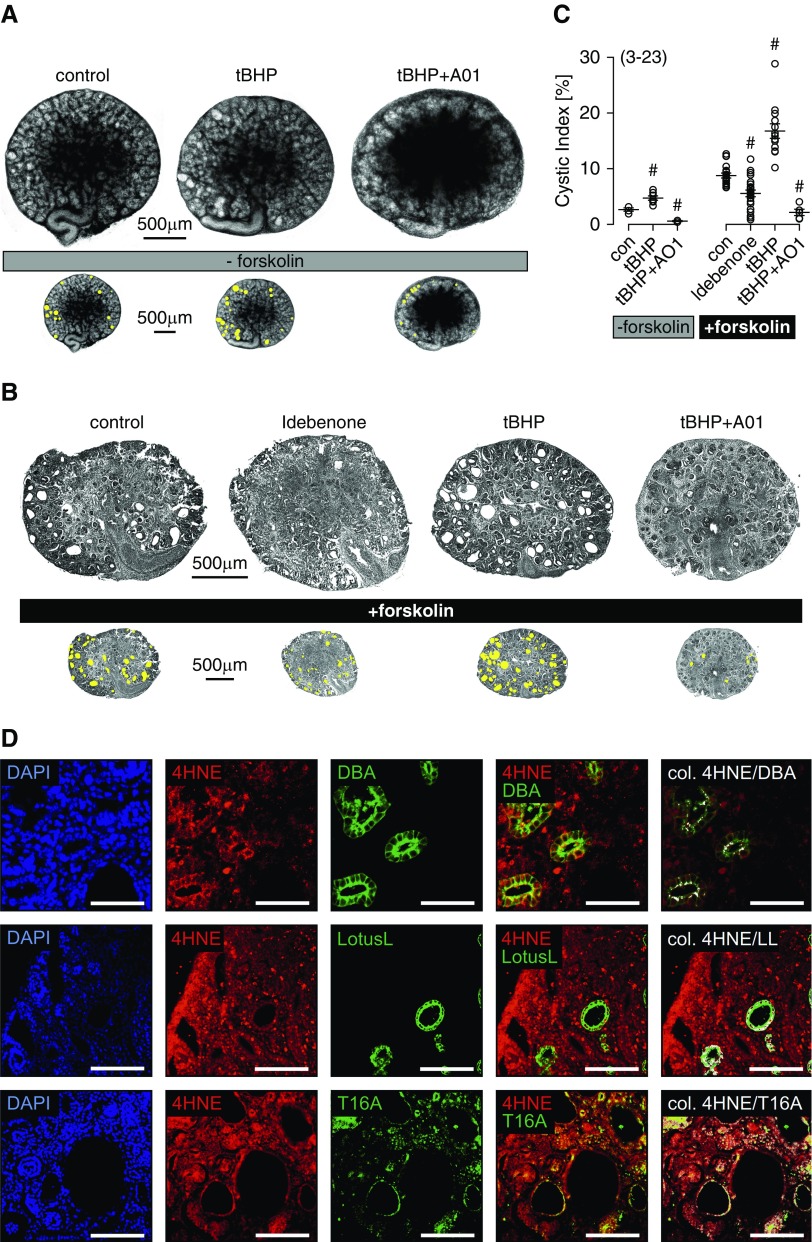Figure 2.
Reactive oxygen species are inducing renal cysts in mouse embryonic kidney organ culture. (A) Cyst development in embryonic PKD1−/− kidneys maintained as organ cultures. Cysts were present even in the absence of cAMP-dependent stimulation, and they were more frequent in the presence of tert-butyl hydroperoxide (tBHP). Cyst growth by tBHP was inhibited by CaCCinhAO1 (AO1; 10 μM). (B) Cyst development in the presence of forskolin (1 μM). Cyst formation was augmented by tBHP (10 μM), but it was inhibited by idebenone (20 μM idebenone; present throughout the experiment) or AO1 (10 μM; present throughout the experiment). (C) Cystic index obtained from PKD1−/− mouse kidneys in the absence and presence of forskolin. Spontaneous cyst formation was observed in the absence of forskolin, and it was enhanced when forskolin was present. #Significant difference compared with control (con; P<0.05; ANOVA). (D) Immunohistochemistry in a PKD1−/− kidney representative of three analyzed kidneys. Peroxidized phospholipids (4-hydroxy-2-nonenal [4HNE]) are in red, and distal tubules/collecting ducts (dolichos biflorus agglutinin [DBA]; top row), proximal tubules (lotus lectin [LL]; middle row), and TMEM16A (T16A; bottom row) are in green. Colocalization was analyzed as in Figure 1, and it is shown in white. Mean ± SEM (number of experiments). DAPI, 4′,6-diamidino-2-phenylindole. Scale bar, 100 μm.

